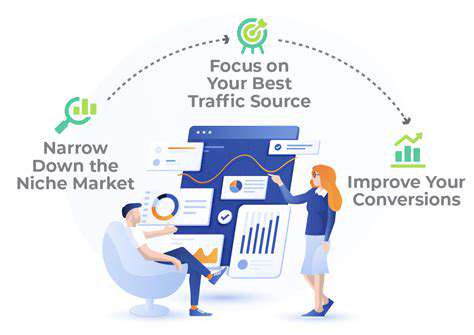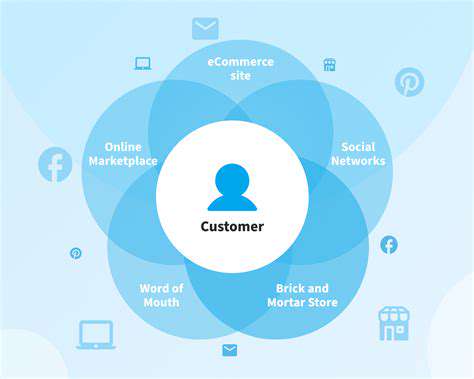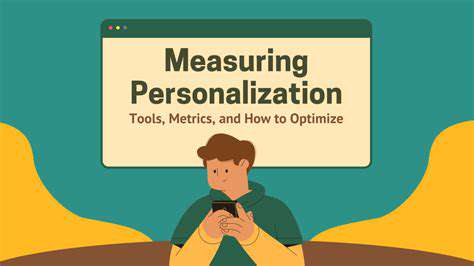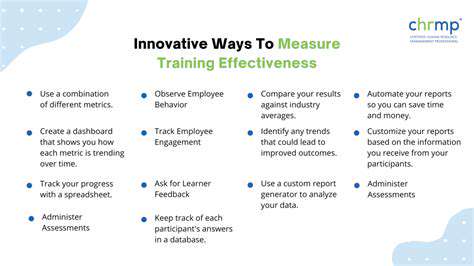The Power of Micro Influencers in Niche Markets

Understanding the Value Beyond Vanity Metrics
While social platforms emphasize follower counts, smart marketers know real influence lives in the quality of connections. A thousand passionate, engaged followers often outperform a million passive spectators when it comes to driving real business results.
The true test comes when content sparks action beyond the platform. Does it inspire conversations at dinner tables? Does it change purchasing habits? These are the metrics that truly matter for niche marketing success.
Identifying Key Performance Indicators (KPIs)
Effective measurement begins with asking the right questions. Instead of How many saw this?, focus on How many were moved to act? For niche campaigns, specific KPIs might include community-generated content, referral traffic from closed groups, or even real-world meetup attendance.
The most insightful metrics often require custom tracking setups. UTM parameters, dedicated landing pages, and unique discount codes can reveal which influencers truly move the needle for your specific goals.
Analyzing Engagement and Reach
In niche marketing, engagement quality tells the real story. A hundred thoughtful comments outweigh thousands of mindless likes. The deepest insights often come from reading between the lines - the tone of conversations, the questions asked, the unsolicited testimonials.
True reach extends far beyond platform metrics. Niche content often gets shared in private messages, workplace chats, and community forums where traditional analytics can't track it. Savvy marketers learn to measure this dark social through surveys and direct customer feedback.
Conversion Tracking and ROI
When targeting niche audiences, conversion tracking needs surgical precision. Standard attribution windows often miss the longer consideration cycles common in specialized communities. The most accurate ROI calculations account for the full customer journey, which might span months of community discussions before converting.
Forward-thinking brands develop custom attribution models that recognize the unique influence pathways within their niche. This might mean valuing early-stage educational content differently from final purchase influencers.
Qualitative Feedback and Sentiment Analysis
Numbers tell half the story; language reveals the rest. Advanced sentiment analysis can detect subtle shifts in community perception that quantitative metrics miss. The way people describe your brand in their own words often contains game-changing insights.
Handwritten testimonials, voice messages, and video reviews provide rich qualitative data. These organic expressions reveal emotional connections and usage contexts that structured surveys can't capture.
Utilizing Data for Strategic Adjustments
The most successful niche marketers treat data as a living, breathing guide rather than a static report card. They create feedback loops where insights immediately inform content adjustments and community engagement strategies.
This approach resembles scientific experimentation more than traditional marketing. Test small, measure precisely, scale what works - and have the courage to abandon what doesn't, no matter how beloved the concept might be.
Strategic Partnerships: Maximizing the Micro-Influence Advantage
Identifying Ideal Micro-Influencers
Finding the right micro-influencers resembles matchmaking more than media buying. The strongest partnerships emerge when brands and creators share fundamental values and audience understanding. Chemistry matters as much as metrics when building lasting collaborations.
The search should focus on relevance over reach. An influencer with perfect audience alignment but modest following will outperform a mismatched celebrity every time. Deep content analysis reveals which creators truly understand their community's unspoken needs.
Building Authentic Partnerships
Genuine collaborations feel like natural extensions of the influencer's usual content. The best partnerships develop organically, often beginning with casual engagement before formal arrangements. This gradual approach builds mutual understanding that pays dividends in authenticity.
Trust-building takes time but creates partnerships that withstand market fluctuations. Brands that invest in relationship development gain access to creative ideas and insights that transactional deals never uncover.
Defining Clear Goals and Objectives
Precision in goal-setting separates successful campaigns from aimless collaborations. Beyond generic awareness goals, the most effective partnerships target specific behavioral changes within the niche community.
Objectives should account for the community's unique decision-making processes. In some niches, educational content drives more value than direct response campaigns. The right goals respect the community's natural rhythms.
Crafting Compelling Collaboration Strategies
The most impactful collaborations feel like value-added content rather than interruptions. Co-created content that solves real community problems generates far more engagement than traditional product placements.
Successful strategies often involve multiple touchpoints across the customer journey - from initial education to post-purchase support. This holistic approach mirrors how recommendations naturally spread within tight-knit communities.
Monitoring and Measuring Performance
Niche campaigns require customized measurement frameworks. Standard social metrics often fail to capture the full impact within specialized audiences. Smart brands develop bespoke dashboards that track community-specific success indicators.
The most telling metrics often live outside analytics platforms. Customer service inquiries, community forum mentions, and even competitor reactions can provide unexpected performance insights.
Managing Expectations and Communication
Clear, consistent communication prevents misunderstandings in creative collaborations. The best brand teams act as enablers rather than gatekeepers, providing guidance while respecting the influencer's creative expertise.
Regular check-ins should focus on mutual learning rather than just reporting. These conversations often surface unexpected opportunities to enhance the partnership's impact.
Building Long-Term Relationships
The most valuable influencer relationships evolve alongside the communities they serve. Seasoned partners develop an almost psychic understanding of each other's strengths and the community's evolving needs.
These enduring collaborations become brand assets that compound in value over time. The trust and institutional knowledge accumulated through years of partnership create competitive advantages no one-time campaign can match.
Read more about The Power of Micro Influencers in Niche Markets
Hot Recommendations
- Personalizing Email Content with User Behavior
- Geofencing for Event Attendance Tracking
- Reputation Management on Social Media
- UGC Beyond Photos: Videos, Testimonials, and More
- The Future of Data Privacy Regulations
- Accelerated Mobile Pages (AMP) Benefits and Implementation
- The Future of CRM: AI and Voice Integration
- Google Ads Smart Bidding Strategies: Maximize Value
- Common A/B Testing Pitfalls to Avoid
- Local SEO Strategies for Small Businesses











